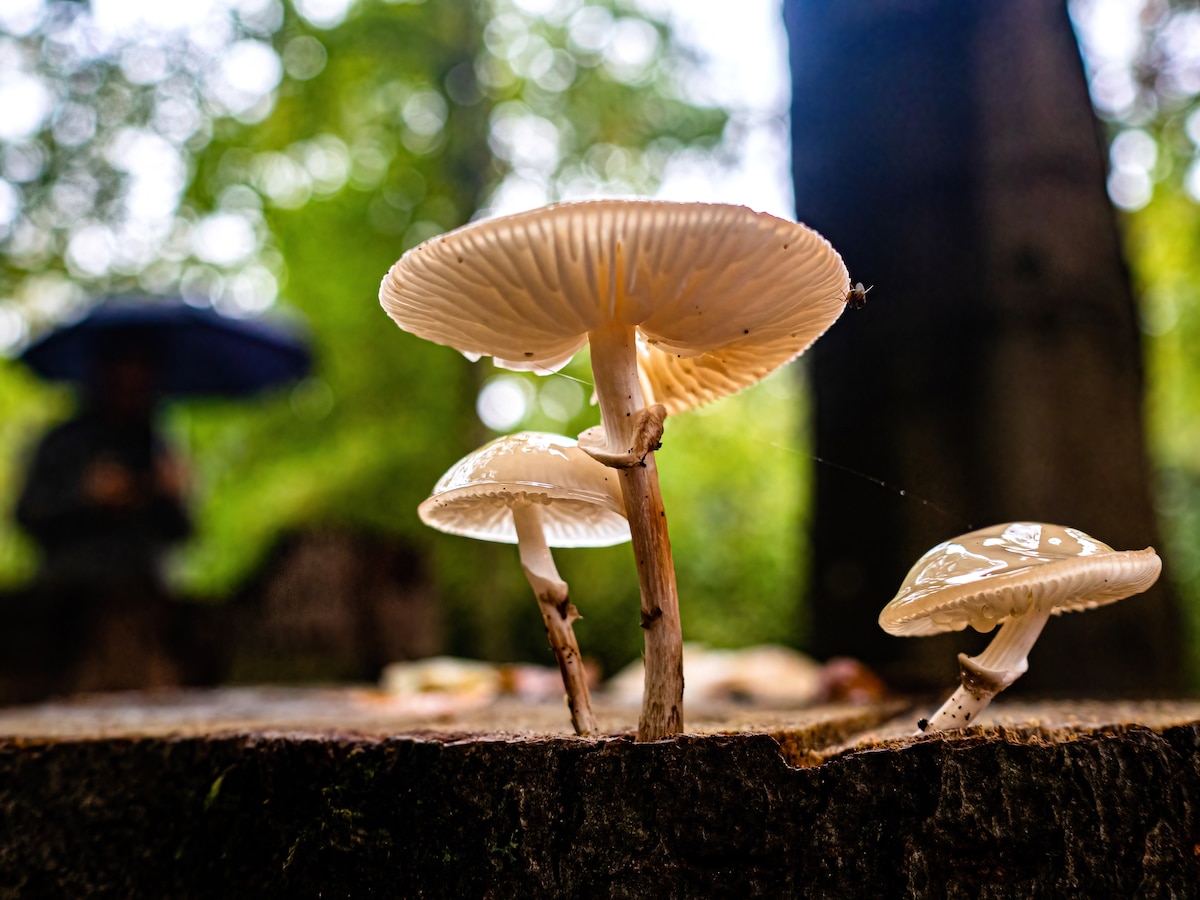Products You May Like
Mushrooms growing on a log in the Netherlands. Ana Fernandez / SOPA Images / LightRocket via Getty Images
 Why you can trust us
Why you can trust us
Founded in 2005 as an Ohio-based environmental newspaper, EcoWatch is a digital platform dedicated to publishing quality, science-based content on environmental issues, causes, and solutions.
Mycelium is the root system of fungi — like mushrooms — that consists of thin, hair-like tissue filaments. This rich network of fungal threads — called hyphae — grows in soil substrate or on places like rotting tree trucks. The mass of roots collects nutrients and water, as well as anchors and supports the mushroom fruit, though some mycelia species don’t produce mushrooms.
Recently, three biotechnologists from the UK — Elise Elsacker and Martyn Dade-Robertson of Newcastle University, along with Meng Zhang of Northumbria University — have found a way to use mycelium to create a self-healing, leather-like material.
More From EcoWatch
Their new paper, “Fungal Engineered Living Materials: The Viability of Pure Mycelium Materials with Self-Healing Functionalities,” was published in the journal Advanced Functional Materials.
The scientists described the process and findings of their research, including how well the self-healing mycelium leather worked when put to the test.
“In this study, pure mycelium materials are fabricated for use as leather substitutes, and it is found that chlamydospores, thick-walled vegetative cells formed at the hyphal tip, may be the key to the material’s self-healing properties. The results suggest that mycelium materials can survive in dry and oligotrophic environments, and self-healing is possible with minimal intervention after a two-day recovery period,” the authors wrote.
Previous research had shown that big, matted masses of intertwining mycelium branches could grow in fungal colonies, usually underground, reported Phys.org. The earlier research also found that these structures could be treated and made into what is known as mycelium leather.
However, the treatments used in this method have a tendency to kill regenerative nodules called chlamydospores. The researchers set out to try and alter the process to avoid killing the chlamydospores so that the material could be self-healing in the right environment.
The trio of scientists added live chlamydospores to a watery mixture of proteins, carbohydrates and nutrients to produce mycelium in the lab. Once a thick skin had formed on top of their batch of liquid, the researchers removed the skin and set it aside to dry.
During the drying process, they added chemicals and used a variety of temperatures to allow the mycelium material to become leathery while retaining its chlamydospores. The result was a material similar in quality and appearance to other mycelium leathers.
To put its healing properties to the test, the researchers punched holes in the leather and put it in a vat of the liquid used to create it. Once it was removed from the liquid and had begun to dry, the chlamydospores filled in the holes, restoring the mycelium leather to a state as strong as the scientists’ control sample — with scars.
“We believe that the material has the potential to revolutionize the way we think about wearable technology and medical implants. It has the ability to heal itself and regenerate, providing endless possibilities for its use,” said Zhang, of the Department of Applied Sciences at Northumbria University, as Tech Times reported.
Subscribe to get exclusive updates in our daily newsletter!
By signing up, you agree to the Terms of Use and Privacy Policy & to receive electronic communications from EcoWatch Media Group, which may include marketing promotions, advertisements and sponsored content.
